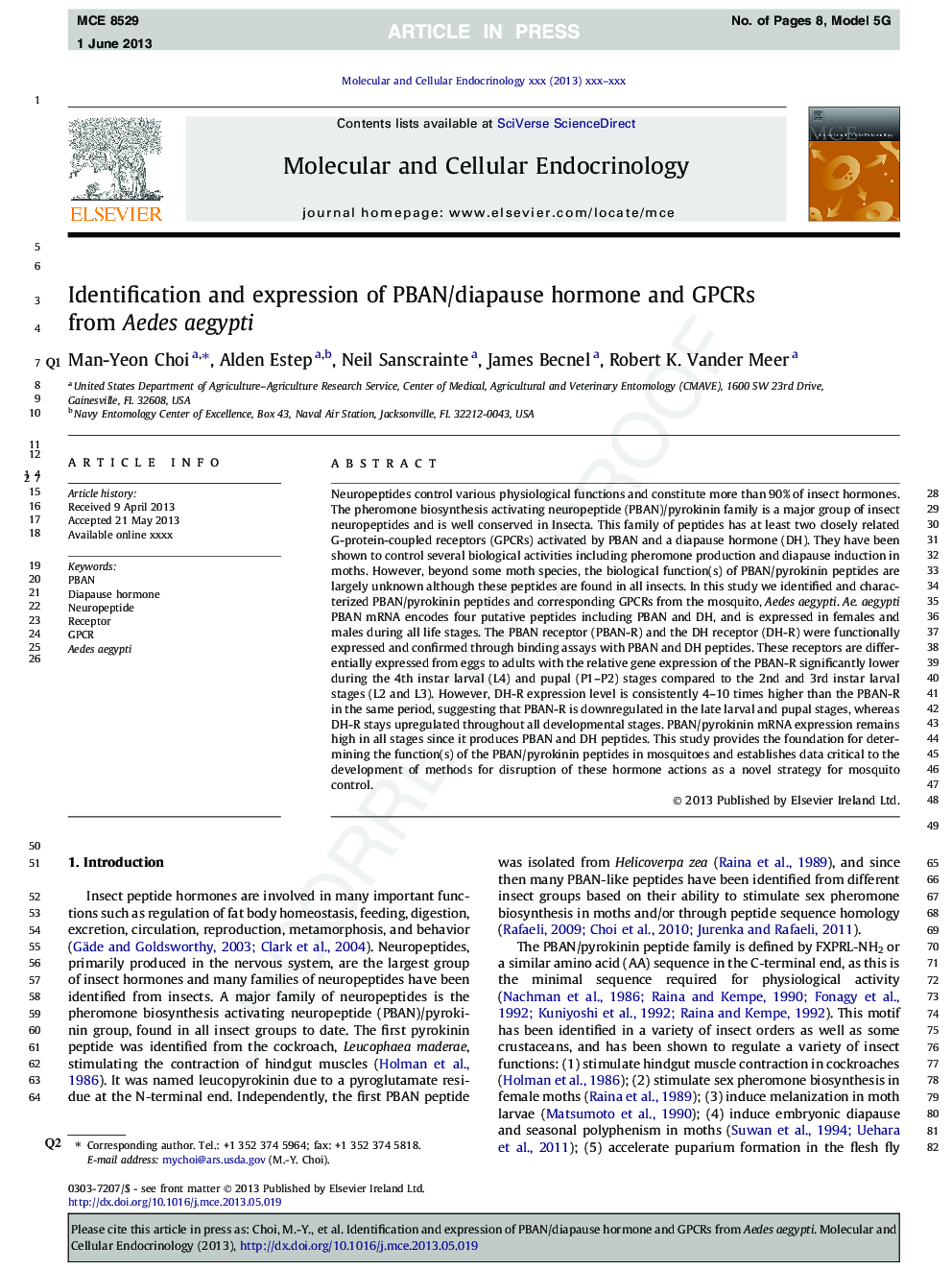| کد مقاله | کد نشریه | سال انتشار | مقاله انگلیسی | نسخه تمام متن |
|---|---|---|---|---|
| 8477428 | 1550902 | 2013 | 8 صفحه PDF | دانلود رایگان |
عنوان انگلیسی مقاله ISI
Identification and expression of PBAN/diapause hormone and GPCRs from Aedes aegypti
دانلود مقاله + سفارش ترجمه
دانلود مقاله ISI انگلیسی
رایگان برای ایرانیان
کلمات کلیدی
موضوعات مرتبط
علوم زیستی و بیوفناوری
بیوشیمی، ژنتیک و زیست شناسی مولکولی
بیولوژی سلول
پیش نمایش صفحه اول مقاله

چکیده انگلیسی
Neuropeptides control various physiological functions and constitute more than 90% of insect hormones. The pheromone biosynthesis activating neuropeptide (PBAN)/pyrokinin family is a major group of insect neuropeptides and is well conserved in Insecta. This family of peptides has at least two closely related G-protein-coupled receptors (GPCRs) activated by PBAN and a diapause hormone (DH). They have been shown to control several biological activities including pheromone production and diapause induction in moths. However, beyond some moth species, the biological function(s) of PBAN/pyrokinin peptides are largely unknown although these peptides are found in all insects. In this study we identified and characterized PBAN/pyrokinin peptides and corresponding GPCRs from the mosquito, Aedes aegypti. Ae. aegypti PBAN mRNA encodes four putative peptides including PBAN and DH, and is expressed in females and males during all life stages. The PBAN receptor (PBAN-R) and the DH receptor (DH-R) were functionally expressed and confirmed through binding assays with PBAN and DH peptides. These receptors are differentially expressed from eggs to adults with the relative gene expression of the PBAN-R significantly lower during the 4th instar larval (L4) and pupal (P1-P2) stages compared to the 2nd and 3rd instar larval stages (L2 and L3). However, DH-R expression level is consistently 4-10 times higher than the PBAN-R in the same period, suggesting that PBAN-R is downregulated in the late larval and pupal stages, whereas DH-R stays upregulated throughout all developmental stages. PBAN/pyrokinin mRNA expression remains high in all stages since it produces PBAN and DH peptides. This study provides the foundation for determining the function(s) of the PBAN/pyrokinin peptides in mosquitoes and establishes data critical to the development of methods for disruption of these hormone actions as a novel strategy for mosquito control.
ناشر
Database: Elsevier - ScienceDirect (ساینس دایرکت)
Journal: Molecular and Cellular Endocrinology - Volume 375, Issues 1â2, 15 August 2013, Pages 113-120
Journal: Molecular and Cellular Endocrinology - Volume 375, Issues 1â2, 15 August 2013, Pages 113-120
نویسندگان
Man-Yeon Choi, Alden Estep, Neil Sanscrainte, James Becnel, Robert K. Vander Meer,